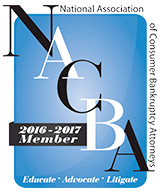Bail can be a complex topic. Many defendants and families go through the process, not knowing what might happen next, especially if it is their first time.
However, navigating it becomes significantly more straightforward once you understand how it works.
That’s where this post can help. It runs through the bail process in California, explaining what happens at each stage. By the end of it, you should understand your rights and how to ensure you get your bail money back once your trial concludes.
How The Bail Process Works In California
The bail process in California follows strict rules set out in law. Law enforcement officials and courts must follow due process to treat the defendant fairly.
Step 1: Arrest
The first step is arrest. Police take the defendant into custody, usually in a jail cell at the local police station.
Officers can arrest anyone they believe committed an offense but must charge them with a crime within 48 hours.
Step 2: The Bail Hearing
The next step is the bail hearing. Here, a judge sets how much the defendant needs to pay to secure release from jail.
Most misdemeanors and felonies are eligible for bail. However, judges have considerable latitude to deny bail depending on the circumstances.
For example, if the crime is serious (such as first-degree murder), they might deny bail on grounds of “flight risk” or “threat to the community.”
Judges also consider the defendant’s past actions during bail hearings, such as skipping court hearings. If previous bail violations are severe, that may prevent new bail terms from being granted.
Courts have 48 hours to make bail arrangements once officials charge defendants with a crime. If the court does not set a bail hearing, the defendant has the right to request one. Sometimes, judges will deny bail hearings due to the alleged severity of the crime or past offenses, which is why working with an attorney who understands the case and the law is essential.
Step 3: Post Bail
The third step is to post bail.
Bail Bond
The most common option is to use a bail bond. Here, the defendant pays a bail agency a non-refundable fee for them to pay the required bail amount set by the judge.
San Diego Bail Bonds operates a business in this industry. It says that defendants can apply for bail any time of day, thanks to its twenty-four-seven support.
Cash Bail
The next most common option is to post cash bail. Here, the defendant pays the whole bail amount without the help of a bail agent.
Unfortunately, this approach is practically and financially challenging. Even if the defendant has the cash to pay the fees, law enforcement officials may still block their bank account, preventing them from transferring the money.
Property Bond
The final option is to post a property bond. These are rarer and use the defendant’s home as collateral for the bail amount. If they don’t attend court, officials can seize their property.
This approach is significantly more complex than cash or bail bonds and requires defendants and courts to complete a lot of paperwork. Consequently, it usually means defendants must wait longer for release.
Step 4: Release
Once the court secures the bail, they release the defendant, who can return to their life. This process is essential because it upholds the principle that an individual is innocent until proven guilty and can continue working and seeing family.
However, the act of release doesn’t guarantee innocence. That’s for the courts to decide at the trial.
Step 5: Attend All Court Hearings And Abide By The Bail Terms
After release, the defendant must attend all court hearings and abide by the bail terms. Failing to do so could mean the bail is forfeited.
If there is a breach and law enforcement finds out about it, the judge will issue an arrest warrant to return the individual to jail.
Step 6: Receive Bail Money
Finally, the courts will return the bail to the relevant party if the defendant sticks to the bail terms. Authorities pay back this money regardless of the outcome of the case.
Defendants who paid cash bail will receive the cash back in their bank account, while those who took out a property bond will see the court’s liens on their homes removed. If bail agents paid the bail, they will receive the cash in their account, not the defendant.
What Is A Bail Schedule?
Counties in California decide on bail amounts by referring to the bail schedule. This document shows how much bail they can demand based on the crime and the defendant’s circumstances.
How much defendants pay varies between crimes, local policies, and county. Some areas of California permit higher bail sums than others.
Judges also have substantial scope to tweak the bail amount to the defendant's circumstances. For example, defendants usually pay more if:
- They have a previous criminal record
- They are a flight risk and may leave the state or country before their trial
- They committed a serious crime
Finally, California judges will also consider the defendant’s ability to post bail. It is not legal to hold someone simply because they cannot afford the payment, as we discuss in the next section.
How Does Own Recognizance Work?
Historically, law enforcement officials would hold defendants without bail or release them on bail as long as they paid the required money. However, the 2018 California Money Bail Reform Act changed this arrangement. The new law introduced an additional option allowing judges to release defendants on their “own recognizance,” meaning no bail is due.
The rules differ slightly depending on the nature of the charges. Judges may release defendants accused of misdemeanors on their “own recognizance” as long as there is no threat to public safety or risk of failing to attend future court hearings.
For felonies, decisions pass to the probation department. It thoroughly investigates the defendant to determine whether “own recognizance” is feasible before supplying a recommendation to the court. Considerations include verifying the defendant’s criminal history, conducting a risk assessment, and contacting law enforcement officials for additional comments. Officials may also interview the defendant directly to discover more.
If judges agree to own recognizance release, California courts may impose additional conditions on defendants. For example, many defendants must wear an electronic monitoring tag to verify their whereabouts. Removing it constitutes a violation of the terms of release, meaning that a judge can issue a warrant for their arrest. Others might have to stay away from certain people or places.
Getting released on their own recognizance is an option for defendants under California law. However, convincing judges and courts to provide it can be challenging. For this reason, many people hire a criminal defense attorney to help them. Lawyers can collect the relevant paperwork and present it to the court, supplying evidence of strong community ties, employment, and no prior failures to appear.
How Can Bail Bond Agents Help You Through The Bail Process?
As discussed above, most defendants ask experienced bail bond agencies, like Alana’s Bail Bonds, to help them secure release from jail. However, these companies do more than simply post bail – they also serve courts and defendants in other ways.
For example, bail bond agencies assist with navigating the paperwork. Experts help clients complete forms accurately to expedite release.
Bail bond companies can also speed up the release process. Agents know the law and local officials, giving them a direct channel to the people who matter. These relationships mean firms can release clients in hours ( sometimes minutes).
Bail agencies can also provide released defendants with court date reminders. These reduce the risk of forfeiting the bail and any collateral in bonds.
Finally, if defendants choose a property bond, bail agents can help them with the paperwork.
Why Do Defendants Use Co-Signers?
Bail bond companies pay the bail amount to the court in exchange for a non-refundable fee. Most agencies set this latter payment at 10% of the bail – the limit imposed by California law.
The arrangement reduces the cost of bail substantially. However, it isn't always cheap because the fee depends on the original bail amount.
For example, suppose a judge sets bail at $100,000. The bail bond’s price (without any discounts) at the 10% rate would be $10,000. Some people in California don’t have that much cash in their bank accounts, but many don’t.
Therefore, when the defendant can’t pay the bail bond upfront, they may enlist a co-signer to obtain it. If the co-signer pays for the bond, they also agree to take responsibility for ensuring they meet their bail terms, including showing up to court. For this reason, anyone considering co-signing bail should exercise caution. The upfront bail bond fee is non-refundable, and their collateral might be at risk if the defendant doesn’t attend their court date.
What Other Bail Requirements Do Courts Impose?
Courts impose various bail requirements in addition to attending your case’s hearings. Most of them attempt to reduce flight risk and ensure public safety.
For example, judges may insist that defendants:
- Submit to electronic monitoring
- Stay in their home until the trial
- Put an ignition interlock mechanism on their vehicle to prevent drunk driving
- Stay away from certain areas or people at all times
- Adhere to various driving or travel restrictions, such as remaining inside the state borders
- Go to drug or alcohol rehab clinic
- Attend therapy sessions or support groups
- Surrender guns, knives, and other weapons to the police
The bail requirements defendants encounter depend on the circumstances surrounding the charges against them. The more skeptical judges are of compliance, the more they will impose additional restrictions.
If defendants don’t comply with the court’s requirements, law enforcement will re-arrest them and arrange a new bail hearing. Here, judges will consider the circumstances and any appeals before deciding on a course of action.
In most cases, judges will forfeit the original bail and either consign the defendant to jail until their trial (denying pretrial release) or increase the bail amount. However, defendants can sometimes appeal by demonstrating they did not violate the bail terms.
How To Help Release A Family Member On Bail
Knowing your loved one has been arrested and is in police custody can be distressing. However, there are steps you can take to help them.
Experienced agency King Stahlman Bail Bonds recommends beginning with information gathering. Find out where your family member is being held and ask whether the judge has set a bail amount.
Once you have that information, you can consider your next steps. One option is to pay the bail in cash directly. However, you will be responsible for ensuring your loved one attends court.
Another option is to work with a bail bond company. You can pay the bail bond yourself, act as a co-signer, or recommend it to your loved one to help their release from jail. Then, bail agents will handle the paperwork on your behalf.
However, you should always read any agreements carefully before signing. Agents often ask you to take financial responsibility if your loved one skips court or breaks bail conditions.
Once the jail releases your loved one, talk to them about the bail terms. Ensure they understand how to stay out of jail during the pre-trial period and avoid re-arrest.
Ideally, prepare a room for them to stay with you. Keeping them close by will make it more straightforward to monitor their activities.
Now You Understand The Bail Process
This post explained how the bail process works in California and what defendants can do to ensure courts return bail money to them (or the bail bond agency). To avoid re-arrest, it is essential to abide by the bail’s terms.
We also looked at how bail bond agencies can help defendants and their families. We learned how these firms assist with the release process, speeding it up and allowing the accused to return to their regular lives quickly.
If you or a family member is in jail and you’d like to discuss the bail process, call our team.











